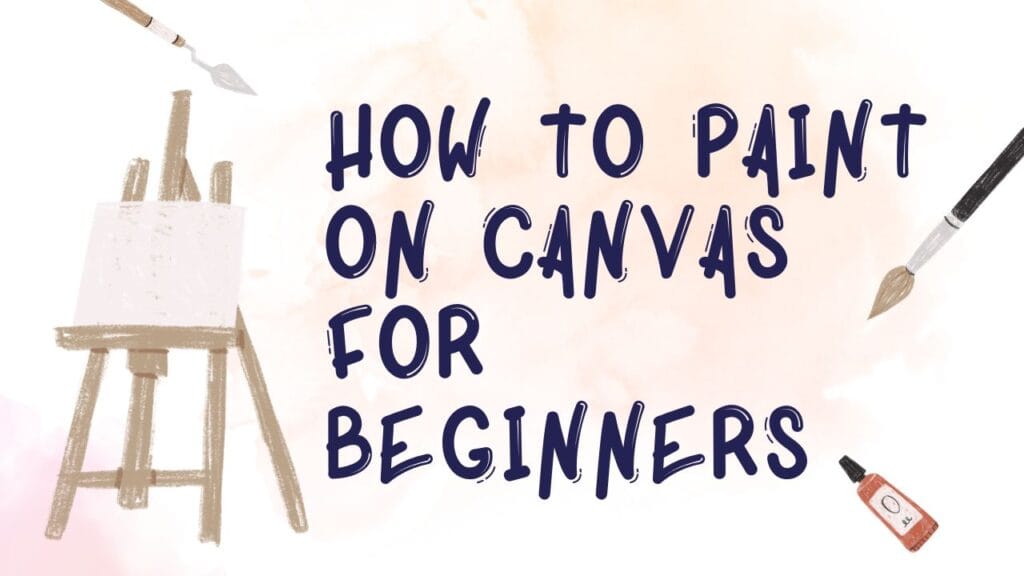Painting on canvas can be a fun and rewarding hobby for people of all ages and skill levels. Whether you’re a beginner looking to try your hand at a new art form or an experienced painter looking to switch up your medium, canvas provides a smooth and versatile surface for creating beautiful works of art. Here’s a step-by-step guide on how to get started with painting on canvas.
1. Gather your materials. To paint on canvas, you’ll need a canvas board or stretched canvas, paints, brushes, and a palette (a flat surface for mixing paint). You may also want to have a sketchpad or reference image to work from, as well as a container for water and a rag or paper towels for cleaning up.
2. Prepare your canvas. If you’re using a canvas board, you can simply place it on a flat surface to start painting. If you’re using a stretched canvas, you’ll need to stretch and prime it first. To stretch the canvas, place it over a frame or wooden bars and secure it in place with staples or tacks. Once the canvas is stretched, use a gesso primer to coat the surface. This will create a smooth, even base for your paint and help the colors stand out more vividly.
3. Sketch your design. Before you start painting, it’s a good idea to sketch out your design on a separate piece of paper. This will help you get a sense of the composition and proportions of your painting, and allow you to make any necessary adjustments before you begin applying paint to the canvas. You can also use a reference image or photograph as a guide.
4. Mix your paints. Choose the colors you want to use for your painting and mix them on your palette to create the desired shades. Experiment with different combinations and proportions to find the perfect mix for your desired effect.
5. Start painting. Begin by blocking in the larger areas of color with broad brushstrokes. As you work, pay attention to the values (lights and darks) in your painting and strive for a sense of balance and harmony. Use thin, precise brushstrokes to add details and texture, and don’t be afraid to make corrections or changes as you go.
6. Let your painting dry. Once you’ve finished painting, allow your canvas to dry completely before framing or displaying it. This can take anywhere from a few hours to a few days, depending on the humidity and the thickness of the paint.
7. Choose the right paints. There are several types of paints that are suitable for use on canvas, including oil paints, acrylic paints, and watercolor paints. Each type of paint has its own unique properties and characteristics. For example, oil paints have a slow drying time and are great for creating rich, vibrant colors, while acrylic paints dry quickly and are easier to clean up.
8. Use the right brushes. The type of brushes you use can have a big impact on the appearance of your painting. Natural bristle brushes are typically best for oil paints, while synthetic brushes are better for acrylics. Choose brushes with a pointed tip for detailed work and flat brushes for covering large areas.
9. Protect your work. Once your painting is dry, it’s a good idea to protect it with a varnish or sealant. This will help to preserve the colors and prevent the paint from fading or cracking over time.
10. Experiment with different techniques. There are many different techniques you can use to create different effects in your paintings. For example, you can use a palette knife to create textured brushstrokes, or mix different colors together on the canvas to create a sense of depth and movement. Don’t be afraid to try out different techniques and see what works best for your style.
11. Practice regularly. Like any art form, painting on canvas requires practice to improve your skills and develop your style. The more you paint, the more comfortable you’ll become with the medium and the better you’ll get at creating the effects you want. So don’t be afraid to take on new challenges and try new things as you continue to grow as an artist.
With these steps in mind, you’ll be well on your way to creating beautiful face paintings on canvas. Whether you’re interested in creating realistic landscapes, abstract compositions, or anything in between, canvas is a great medium for expressing your creativity and bringing your artistic vision to life.
